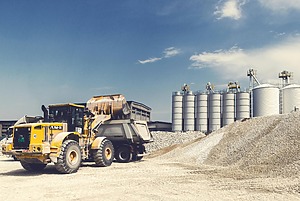As vapour travels through the ground, it distributes heat over a wider area. “We noticed a sharp temperature rise wherever the vapour flow reached. This means the energy is moving and can be controlled,” says Prof. Ždankus.
Such a system could help balance district heating networks or alleviate stress during power grid overloads. “It’s also possible to install thermal accumulators for individual use – beneath residential buildings, streets, or parking lots,” he adds.
This research demonstrates that underground heat storage can be far more efficient than previously believed. In addition, similar principles could apply to cooling. “Underground cold or coolness storage is also possible,” notes a KTU expert.
Turning ground into an energy cell
Once the feasibility of underground heat storage was confirmed, researchers began exploring its practical applications. They wanted to see if the soil beneath buildings could passively store heat, making use of the natural downward flow of heat from buildings into the ground. “We started in the laboratory. A prototype ground energy cell was developed alongside a testing setup to study how heat spreads through the soil. Temperatures were measured at various depths, including at the surface and in the air,” explains Dr Ždankus.
The team examined how long the soil retained heat and how quickly it returned to its original temperature. These findings helped assess the long-term reliability of such a storage method.
KTU master’s students were also involved in the project. Measurements and calculations spanned an entire year, which enabled the team to monitor seasonal effects and compare results with existing climatological data. “The year-long measurements revealed natural seasonal patterns in soil temperature and allowed us to identify several trends,” the professor shares.
Additional numerical simulations were performed to evaluate potential heat losses and the effectiveness of heat storage under buildings. “We found that even the passive use of an isolated soil volume beneath a building can reduce heat loss and increase its energy efficiency. Less heat loss means less energy needed for heating, which in turn leads to energy savings. If that heat comes from burning fossil fuels or biomass, our solution also lowers carbon dioxide emissions,” notes Ždankus.
To make these ground-based storage systems viable for widespread use, researchers are now developing scaled-down prototypes and refining heat distribution control methods. According to the scientist of the KTU’s Faculty of Civil Engineering and Architecture, the project is evolving through collaboration with experts in various fields – from geotechnical engineers to energy system specialists.
“Our immediate goal is to integrate existing solutions, such as boreholes, piles, and other underground heat exchange technologies into a system that can benefit both industry and residential sectors,” he concludes.
The article “Research on Increasing the Building’s Energy Efficiency by Using the Ground Beneath It for Thermo-Accumulation” is available here.



